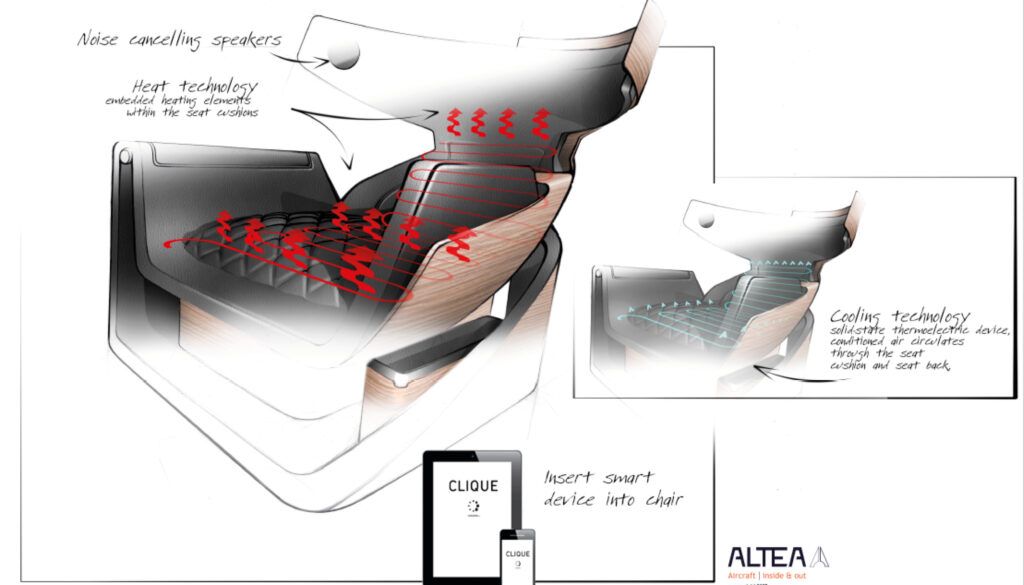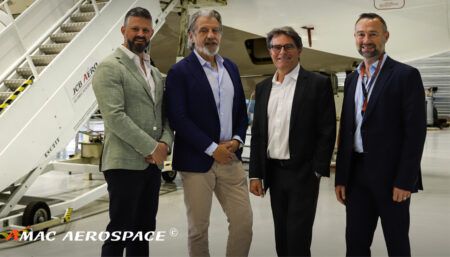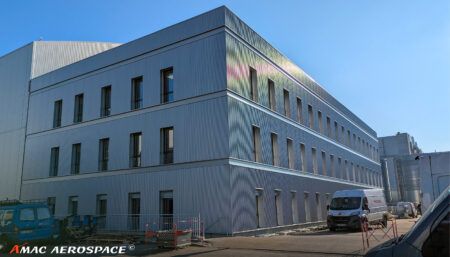Robin Dunlop, partner at Altea, discusses the Clique seat concept, the possibilities of stainless steel, the limitations of AI, and eVTOL design.
Can you share a recent design solution?
Our new Clique seat concept is designed to integrate the passenger’s smart device seamlessly. The seat assumes functions of the device and its apps, instantly familiarising itself to the user’s preferences and adjusting comfort settings in tune with preset preferences. Heating and cooling functions can easily be integrated with existing technology from the automotive industry. A solid-state thermoelectric device is embedded in the seat cushions. Conditioned air circulates through the seat cushion and seat back. There are also noise-cancelling speakers.

What material/technological developments interest you?
While stainless steel is perceived as heavy, it has many aesthetic, sustainable and practical qualities – Altea has several solutions encompassing all these. Also, we think the simple and actionable technologies around seat cooling and heating are underestimated and under used, and it’s an easy technology to integrate into aircraft seat design.
Are new design/visualisation technologies impacting you?
What we see in the broader use of AI tools such as Midjourney is fascinating. However, setting this up is still time-consuming and it lacks accuracy. In our industry, it’s not practical to display generic-looking aircraft interior architecture while highlighting an individual element. If you are working in, say, an ACJ319 interior, your visualisation needs to reflect that – the whole thing needs to come together and involve human judgement and emotional inputs.
What trends will shape jet interiors in the year ahead?
Practical solutions allowing dual functionality are key. No longer are owners looking to fully customise and stamp an individual style on their aircraft – there has to be an aesthetic appealing to a wider audience and careful configuration to ensure better future market and perhaps charter appeal.
Do you have design ideas for or inspired by eVTOLs?
Indeed, this is an intriguing and diverse palette for designers to hone their skills on, although they are quite small aircraft and unlikely to involve customisation for owners for a long time. Interiors are more likely to be pre-packaged, with materials chosen from a pre-certified OEM selection. Moreover, this industry niche aligns more closely with automotive design in terms of space and human factors. They are still inspiring for our design team to review, much like we dip into the luxury car market to see what trends are emerging.
Will the emergence of eVTOLs impact business jet interiors?
‘Impact’ is quite a strong word. ‘Influence’ might be a better choice, much like an owner might approach Altea and request certain elements of their favourite car brand to be incorporated into the interior of their jet. Design is a broad and interconnected field, and we all draw inspiration from various sources. Therefore, it’s true that some of these designs are likely to influence our work. From a practical standpoint, an eVTOL performs a very different function compared with a Gulfstream G700.
This interview was conducted by Izzy Kington and first published in the March/April 2025 edition of Business Jet Interiors International as part of the Design Forum feature.





